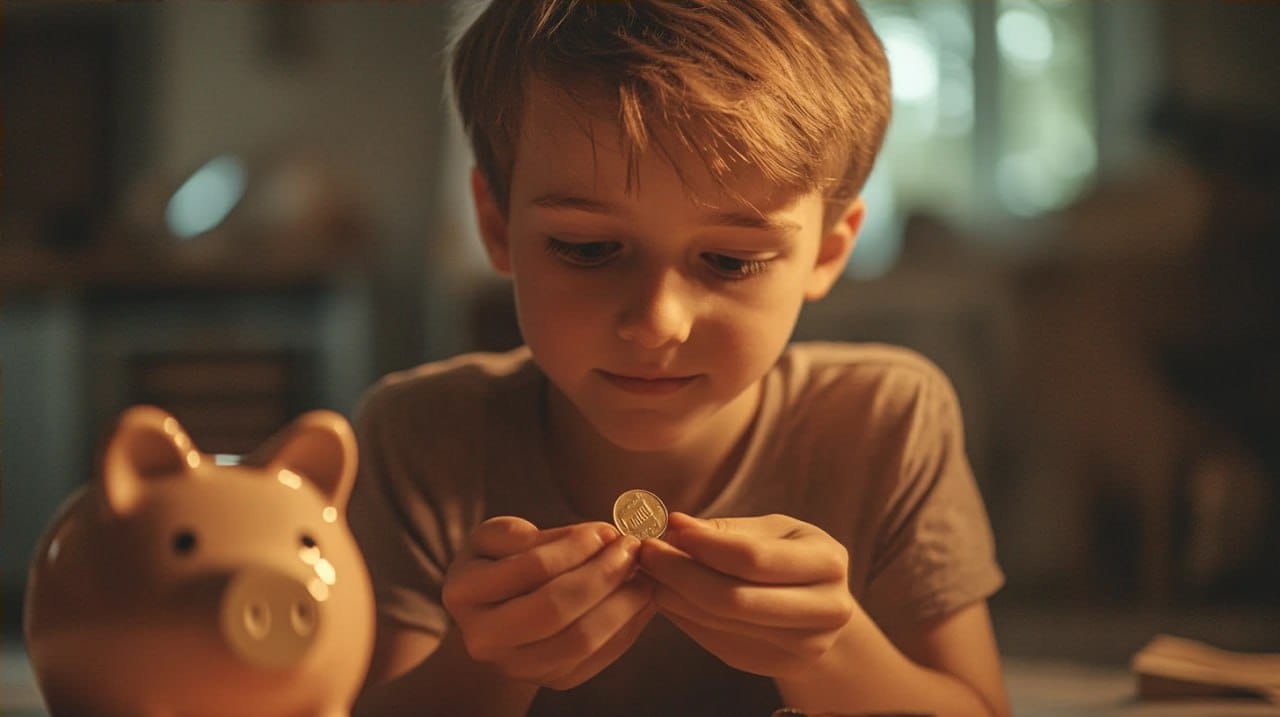How to Teach your Children all about Budgeting Basics
Financial literacy plays an important role in people's lives. With this knowledge, a person is able to manage money wisely, feel more confident, and avoid potential debt problems. It's crucial to teach children financial responsibility from an early age.

In this article, we are going to give some essential tips on how to teach your children to handle finances responsibly.
Begin At a Young Age
Even a small child can be taught how to handle money properly. You can start explaining the importance of money to your kid when they are 3-5 years old. Begin with simple explanations — how does money appear in our life, describe some ways of earning it.
Your child will be excited to get their own piggy bank and save some money that they can earn by doing something. For example, they can help you a bit with the housework or put their toys away in their place on a daily basis. Thus, your child will learn the value of money and acquire a habit of saving.

Give a Small Amount of Money to your Kid
Financial literacy cannot be mastered without practice. This is the reason why a child should receive a small amount of money to manage on their own. It is not appropriate to take their money or criticize their spending decisions. You can just give them advice on budgeting before allocating a certain sum of money.
Here are some effective methods for teaching budgeting to kids:
- Use a Jar or Envelope System
To teach this method, provide your child with three jars and envelopes labeled "Save", "Spend", and "Give". Any time they receive money, they should divide it among the jars or envelopes. This way will help kids understand how to distribute money for different purposes.

How to divide money better?
Half of the money can be spent on fun things like tasty treats, toys, or anything kids want. If they dream of buying bigger things, like a bike or video game, they can put aside 30 percent of their income. Teach your child the importance of helping others, so they may decide to spend 20 percent of their money on something like gifts to their family, friends, pets, or donating to a charity.
- Create Together a Budget for a Goal
Ask your child about their dream purchases. Sit together and discuss how much it costs, how much they can save each week, and when will be able to reach their aim. Your child will be especially proud of the realization that they have managed to reach their financial goal.
- Give your Child Pocket Money
You can allocate a fixed amount of money to your child and avoid giving extra. Talk to other parents and find out how much money they give their children to determine an appropriate amount. This way, your child won’t feel deprived compared to others. Explain how to manage the money, but allow your child the freedom to spend it independently.
Educate on Wise Budgeting
When going shopping with your child, use time for educational purposes and focus on investigating, and comparing prices.You can discuss the pricing process and emphasize the importance of saving money when making purchases. Help them learn how to explore different options and motivate them to make thoughtful choices.
Watch different advertisements together and discuss the techniques which are used there to manipulate people and make them buy a product — do it with simple explanations. This will help children develop critical thinking and recognize certain advertising techniques.
Friends can negatively influence a child when it comes to impulsive buying. Teach your child to stand up for their choice of rational purchases and not to pay attention to the peer pressure. Talking together about such things helps them understand and feel more confident about using money wisely.
Introduce Opportunities to Earn
A child will never truly appreciate the value of money until they start earning it themselves. Offer them some ways to earn pocket money. This way, children will understand the importance of responsibility and realize how hard it is to earn money.
Here are several age-appropriate ways children can get paid:
For Younger Children (Ages 6–11):
- Helping around the house — ask your child to do tasks like cleaning, gardening, dusting the furniture, help with kitchen chores.
- Pet sitting — useful activity that also teaches kids empathy by caring for another living being.
- Selling Handmade Crafts — bracelets, earrings, drawings, or other crafts to neighbors or family.
- Lemonade Stand — a great way to learn entrepreneurial skills and make some fun.
For Teens (Ages 12–17):
- Car washing — they can wash neighbors’ cars to get extra money.
- Lawn Mowing — teach your child how to mow the lawn properly and follow safety precautions in advance.
- Helping younger kids with homework — they can assist them with school work.
- Babysitting — this job can be done after a proper training.
- Creating Social Media Content — many teenagers will be excited to create educational or entertaining content.
Сhildren and teenagers can gain valuable experiences from part-time jobs that help them understand how to earn money in the real world.
Talk About the Importance of Giving
The suggestion to set aside money for gifts and helping others may surprise a child given their modest budget. Explain the importance of helping others and being kind, saying that even tiny gestures can have a big impact. Involve your child in helping a charity organization, talk about people and animals in need. By doing this, you will cultivate compassion and empathy in your child.
A fun way to practice giving is by playing Secret Santa. Explain how your child can play Secret Santa with their friends. They can create a homemade gift or exchange small gifts bought in a shop. To play Secret Santa, you can use a hat or a box with the pieces of paper — they can pick the paper with the name of the gift recipient. This game teaches thoughtfulness and generosity in a cheerful way.
You can use the MySanta organizer to make the exchange more convenient. This online organizer allows you to invite participants via email and draw names with a single click. Each person will secretly create a gift for another person. It's simple for participants to add their gift wishes to the generator, which makes it easy to rely on their preferences.

Use Games and Books to Teach about Budgeting
Learning about money with the help of games and special applications is fun. Children can learn about spending, investing, and purchasing through board games, not just for entertainment. Online tools also introduce children to budgeting in interactive ways.
Here is a list of such games and online tools:
- The Game of Life (ages 8+)
- Monopoly (ages 8+)
- PiggyBot (app for ages 6–12)
- Bankaroo (virtual bank app for kids)
- Savings Spree (financial literacy app)
There are also some great books that help children learn about financial literacy: "Money Ninja" by Mary Nhin, "Rock, Brock, and the Savings Shock" by Sheila Bair, "Lemonade in Winter: A Book About Two Kids Counting Money" by Emily Jenkins, "The Berenstain Bears’ Trouble with Money" by Stan and Jan Berenstain.
Conclusion
When parents educate their children about money at an early age, they help them to avoid potential financial problems in the future. Developing healthy spending habits might require time and effort, but the child will be grateful for such lessons. It is crucial to make these practices easy and entertaining, so that the child can develop a healthy attitude towards money throughout their entire life.
FAQs
What if a child refuses to save up money?
Sometimes it can be difficult to explain the importance of saving to a child, as kids want everything right now. Explain that saving can be especially rewarding, when a child sees the result of their saving — their dream purchase.
How can you become a financial role model for your child?
Demonstrate smart shopping habits on a daily basis, for example, when you go shopping together. Tell about valuable things which you obtain for your family with the help of proper budgeting. Discuss the importance of saving as they make a family’s life more calm and secure.



